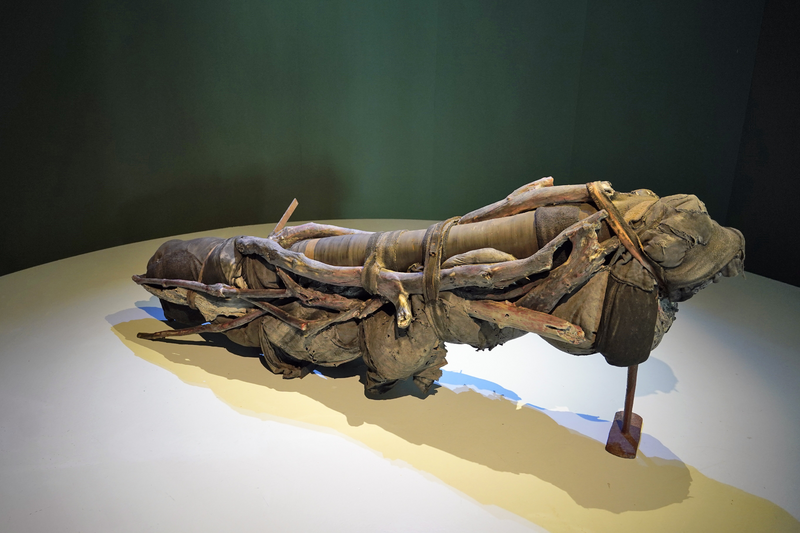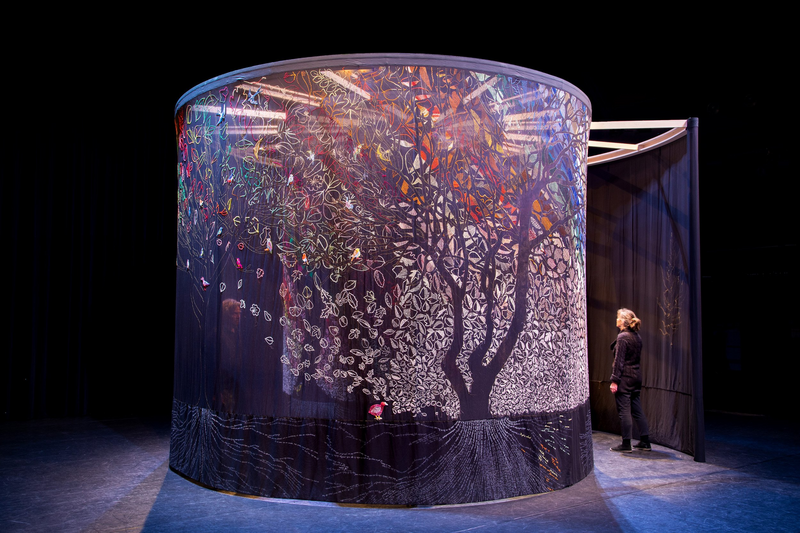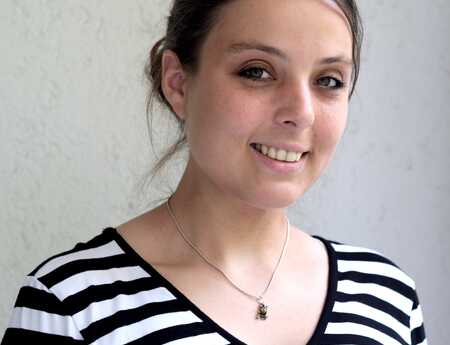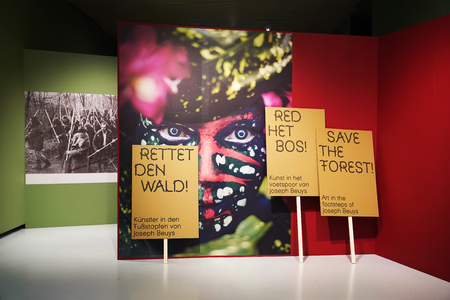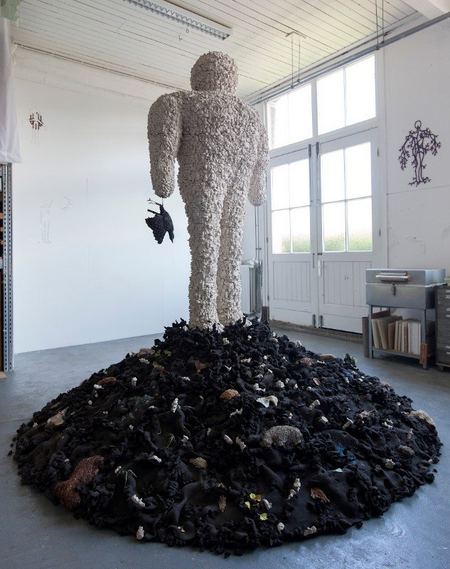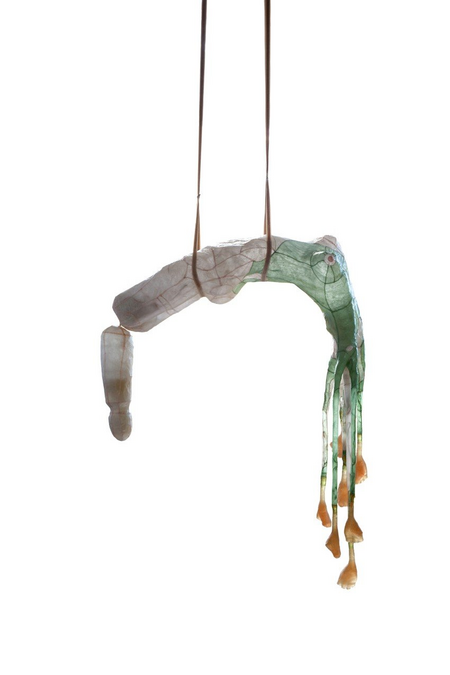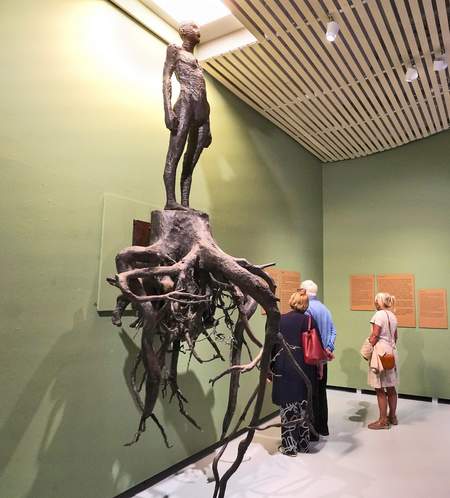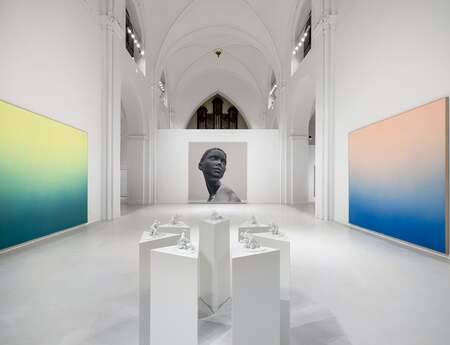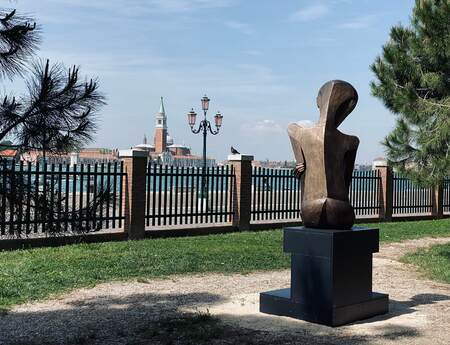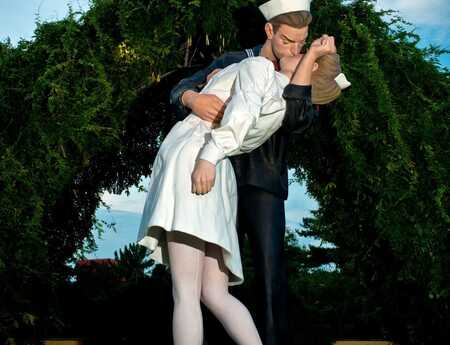How to save the forest … and humankind
In sculpture network’s Online Club of 25 October 2021, we discussed the intricate connection between nature, art, and the human condition. Artist Fleur van den Berg and curator and sculpture network chairwoman Anne Berk opened up the wonderful world of EcoArt for us. If you missed out, here’s your chance to catch up and maybe learn a thing or two about how to "Save the forest“!
Let’s be honest: The topic of environmental crisis and human-made climate change is omnipresent in today’s media, but we still manage to banish it from our thoughts most of the time. Because thinking about it is uncomfortable, because the concept seems too abstract to be relevant to our own individual everyday life, because we have just too much else on our plate … the list of reasons not to take action goes on and on. But the truth is: If we don’t tackle issues like deforestation, high CO2 emissions, and melting pole caps, we will have to face the consequences. We and future generations will have to deal with them, whether we like it or not.
Fleur van den Berg: Linked to the Earth
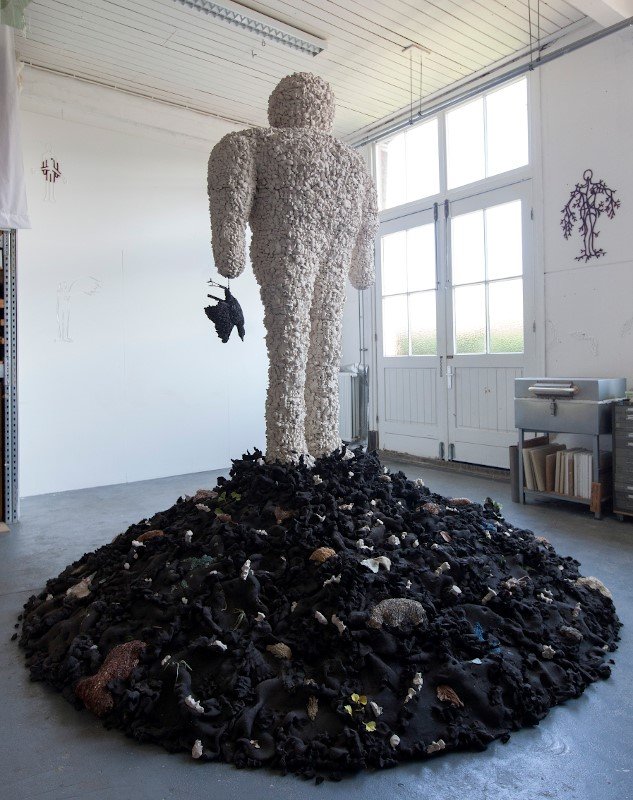
ceramics, height 310 cm, diameter 300 cm
That might sound gloomy and hopeless, an inevitable cloud of dread that hovers above our heads. But it also contains hope and inspiration. It’s not too late! We have all the facts, we just have to react to them. This idea is what drives artists like sculpture network member Fleur van den Berg to create art that touches upon the relationship between humanity and nature and our dependency on the environment. In her talk at our Online Club, she presented sculptures made from a variety of materials which she chose for their flexibility, but also for their environmental impact. Humans made of glass, with arms transforming into branches remind us that we are inseparably linked to the earth. A coat made entirely from teddy bears represents our ambiguous relationship with animals, which we cuddle and love, but also hunt, kill, and eat. The 23 participants of the Online Club were all deeply moved by Fleur’s tribute to nature, her experimental style, and the coherent story she tells with her sculptures despite them being so very different from each other.
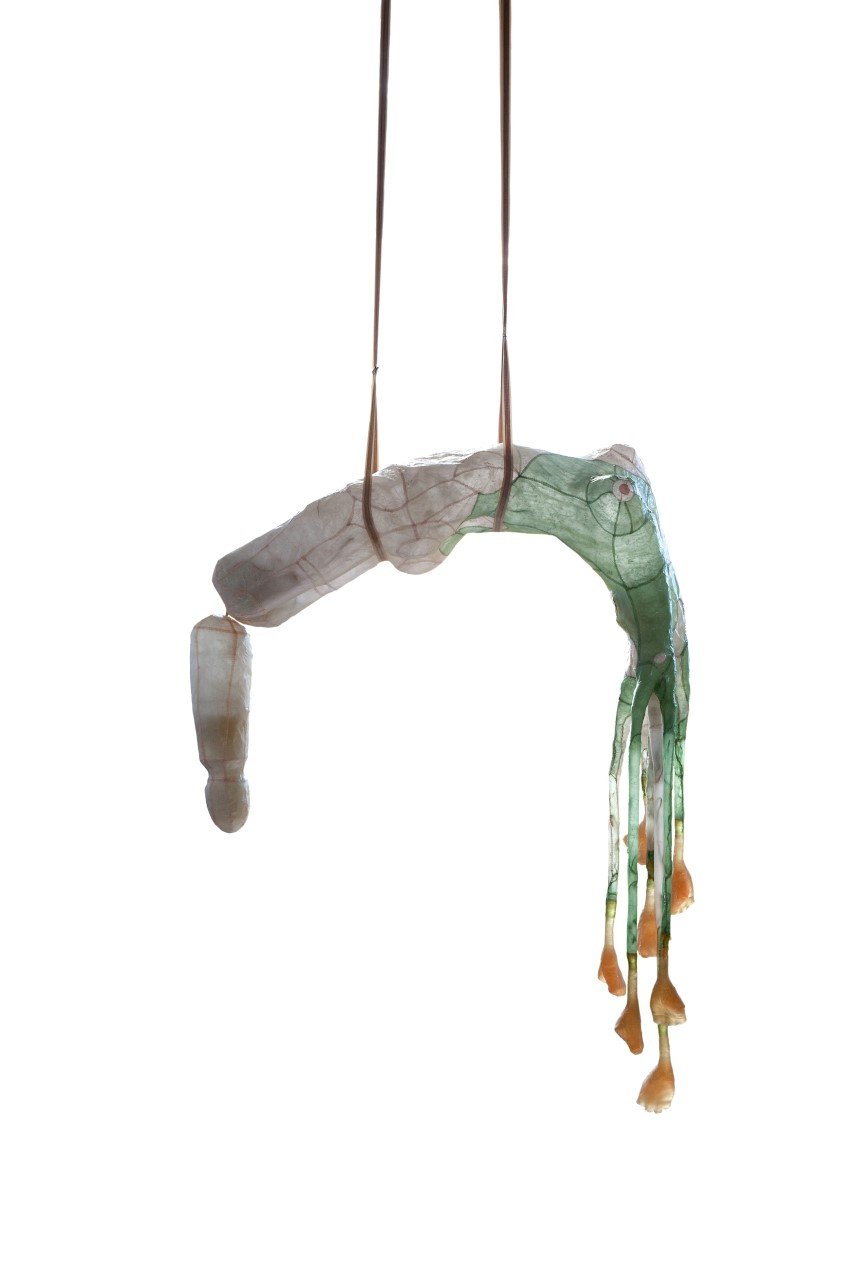
Fleur van den Berg, plantvrouw (plantwoman), 2017, glass, textiles and other materials
height sculpture without straps 150 cm, width 115 cm, depth 28 cm
Save the Forest!
Art helps Fleur to deal with her thoughts and fears concerning our environment, just like art can help us as spectators deal with our feelings. Following her presentation, curator and sculpture network chairwoman Anne Berk led us on a virtual tour of her current exhibition Save the Forest! at Museum Het Valkhof Nijmegen. Departing from Joseph Beuys’ early protest against deforestation in Germany in the 1970s, which gave the exhibition its title, we embarked on a journey through different artistic approaches to the topic of environmental destruction, especially deforestation. Each hand-picked artist shown in the exhibition responds in a different way to this existential crisis: by mourning or documenting it, by trying to reconnect with nature, taking action or even planting trees themselves in an attempt to compensate for our collective failure to protect the woods. Their message is clear: art has the power to create awareness, which is the seed of change.
The wonderful world of EcoArt
Some of the exhibited works express sorrow for the loss of nature. Berlinde de Bruyckere’s sculpture Kreupelhout I („Cripplewood“, 2013) embodies a deep sadness for what is already gone, a tree that has fallen, held together by nothing but straps and bandages. But in this misery, there’s also a spark of hope because who is to say whether the tree is falling down or in the process of healing and rising up again?
While mourning is a crucial part of the process, overcoming the grief which paralyses us is just as important. Some artists recognise a lost connection with nature as one of modern society’s main difficulties and a reason why we don’t take good care of our environment. That’s why reconnecting with nature takes centre stage in the second part of Save the Forest!. Aaron Demetz’s impressive 4 meter bronze statue Heimat („Home“, 2010) warns us not to destroy the foundation our whole civilisation is built on. Giuseppe Penone makes our dependency on nature abundantly clear with his sculptures connecting real plants with human figures. And Marinus Boezem’s LandArt project De Groene Kathedraal („Green Cathedral“, 1996) embodies the sanctity of nature in an attempt to point out how much humans can achieve if they commit themselves to a cause. An enormous cathedral made entirely from trees that were planted over 30 years ago is a monument and a reminder to all of us: If we direct our efforts towards environmental protection, we will overcome this crisis!
Artists are fighting back
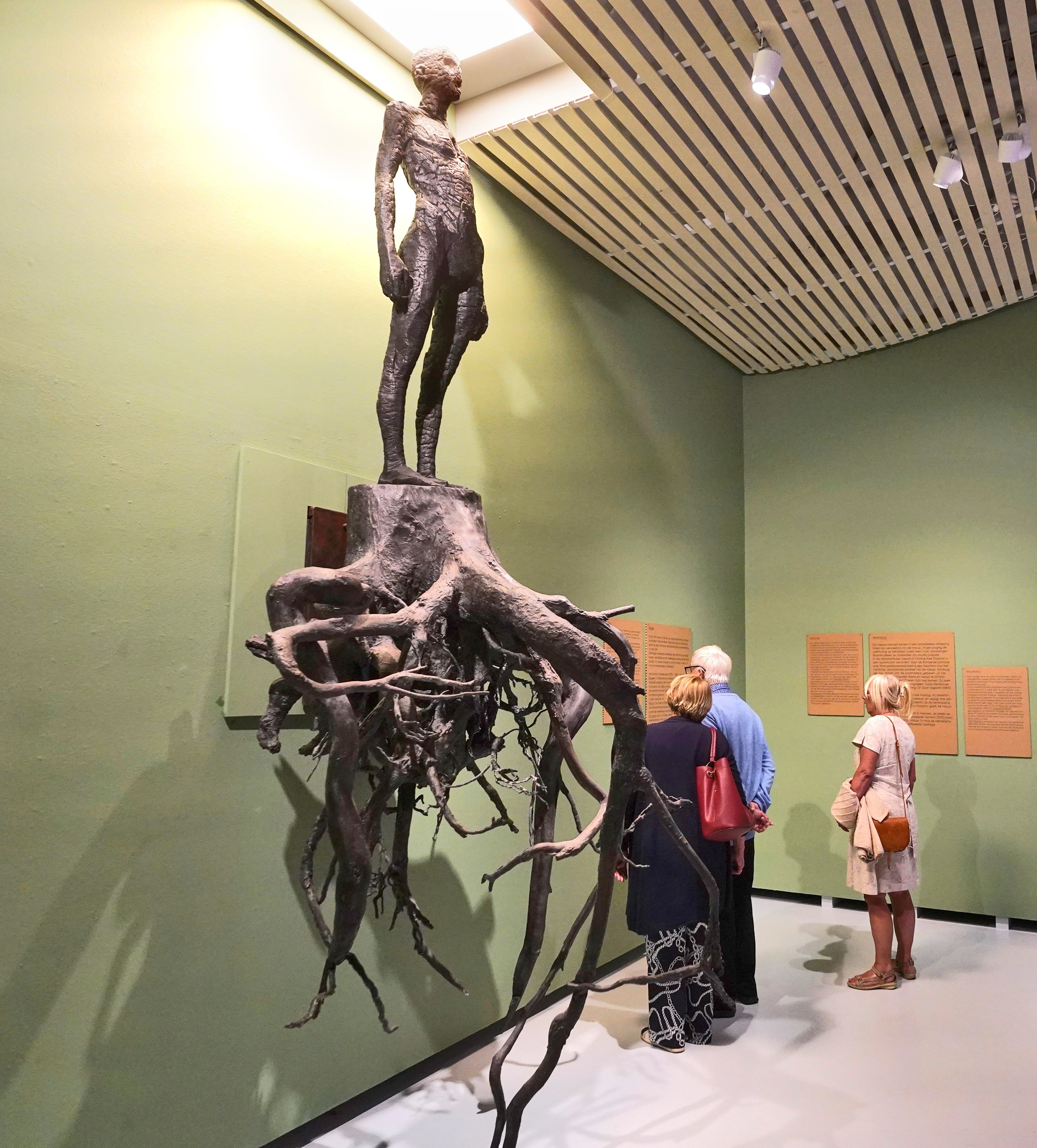
Aron Demetz. Foto Flip Franssen
With this hopeful outlook, we walked into the third part, documentation. Sound artist Chris Watson commemorates what we are about to lose with his sound installation of the awakening of the animals in Madagascar’s last rain forest: The Sound of Sanctuary (2007). In order to preserve places like this for future generations, so that they may experience the rainforest of Madagascar themselves and not just in a recording, we have to take action! That’s what the fourth part of the exhibition is all about, and it is what occupied our discussion the most. What can we do? Polish artist Cecylia Malik’s answer is simple, yet creative: Protest! By breastfeeding her baby on a tree stump and documenting it on Facebook, she launched the initiative Polish Mothers on Tree Stumps, protesting the unregulated cutting down of trees in Poland. Her campaign soon went viral and attracted international attention – which granted her protest’s success in the end. This hopeful example left a lasting impression in all of us: Art can actually initiate change!
Lastly, we got to admire Sara Vrugt’s stunning work 100.000 Trees and a Forest of Thread (2020). Following in Joseph Beuys’ footsteps, who planted 7.000 oaks at the documenta in 1982, she strives to plant 100.000 (!) trees. In order to draw attention to the issue of deforestation, she designed a community art project with 1200 volunteers who embroidered 100 square meters of cloth with birds, trees, and stories. Woven into the cloth are plant seeds, and the idea is for the artwork to return to nature, decay, and regrow as new trees. A beautiful sentiment that illustrates the unity of art and nature.
There is still hope!
The hopeful undertone of this final piece spread to all of us. The beauty of this digital world we live in (despite its challenges and the unavoidable technical difficulties of a Zoom call) is the opportunity to exchange ideas, experiences, and suggestions with people all over the world from the comfort of our own living rooms. Just a few years ago, meeting up face to face with people from 6 different countries on a regular Monday evening would have meant a huge logistical effort. Now it is possible, just like that! An animated chat about how to reduce our carbon footprint followed this very inspiring virtual tour through the exhibition Save the Forest! and the many possibilities of EcoArt. Everyone had something to contribute, and our Online Club ended on the positive note that each and every one of us can take action and do their part in saving the forest – and our own habitat.
Published: November 2021
Cover picture: Rettet den Wald! Save the Forest! Museum Het Valkhof Nijmegen NL eco artists Joseph Beuys and Uýra Sodoma. Photo Flip Franssen

